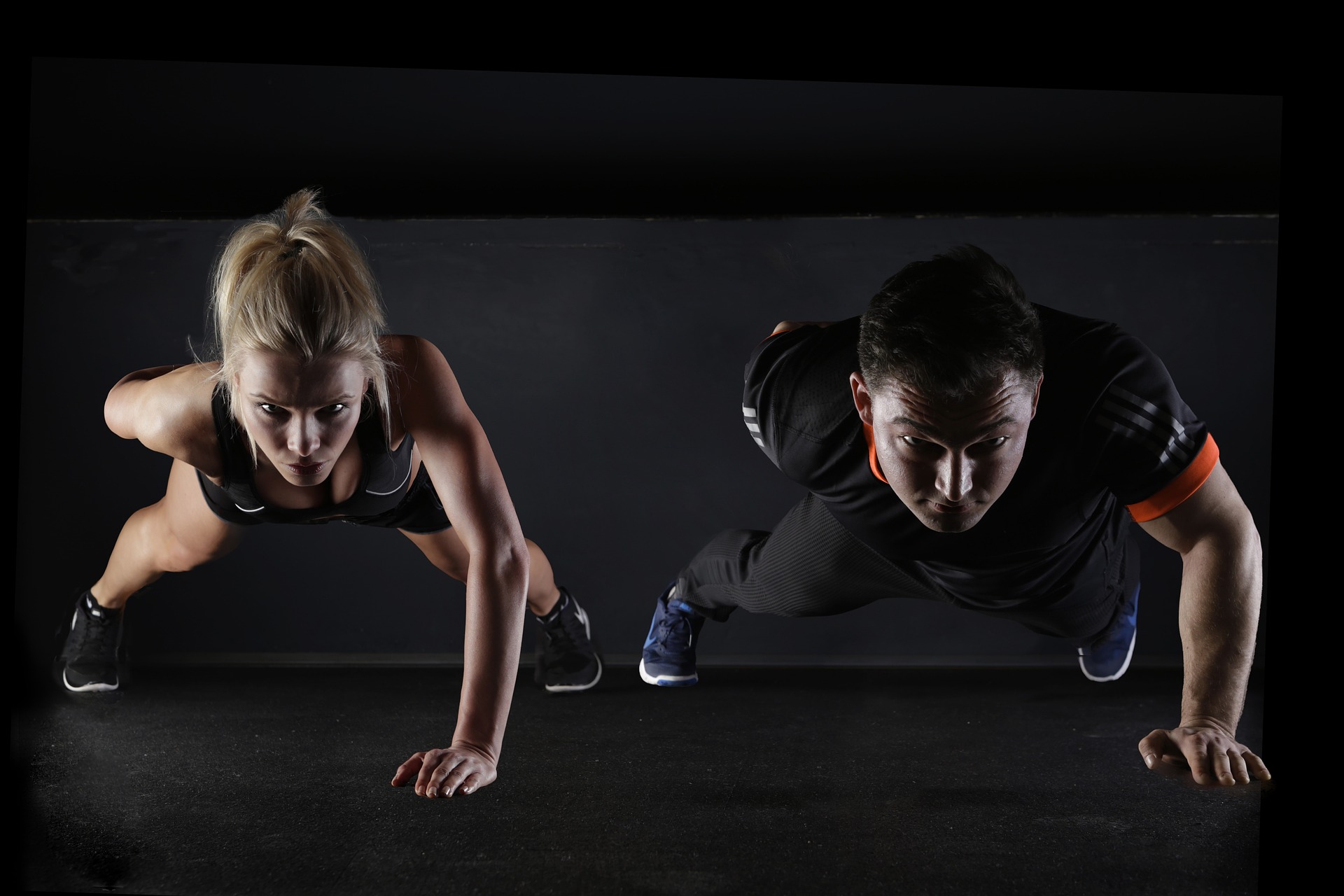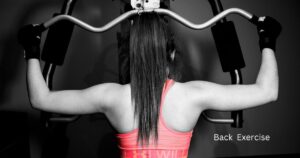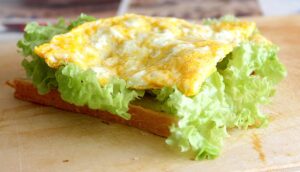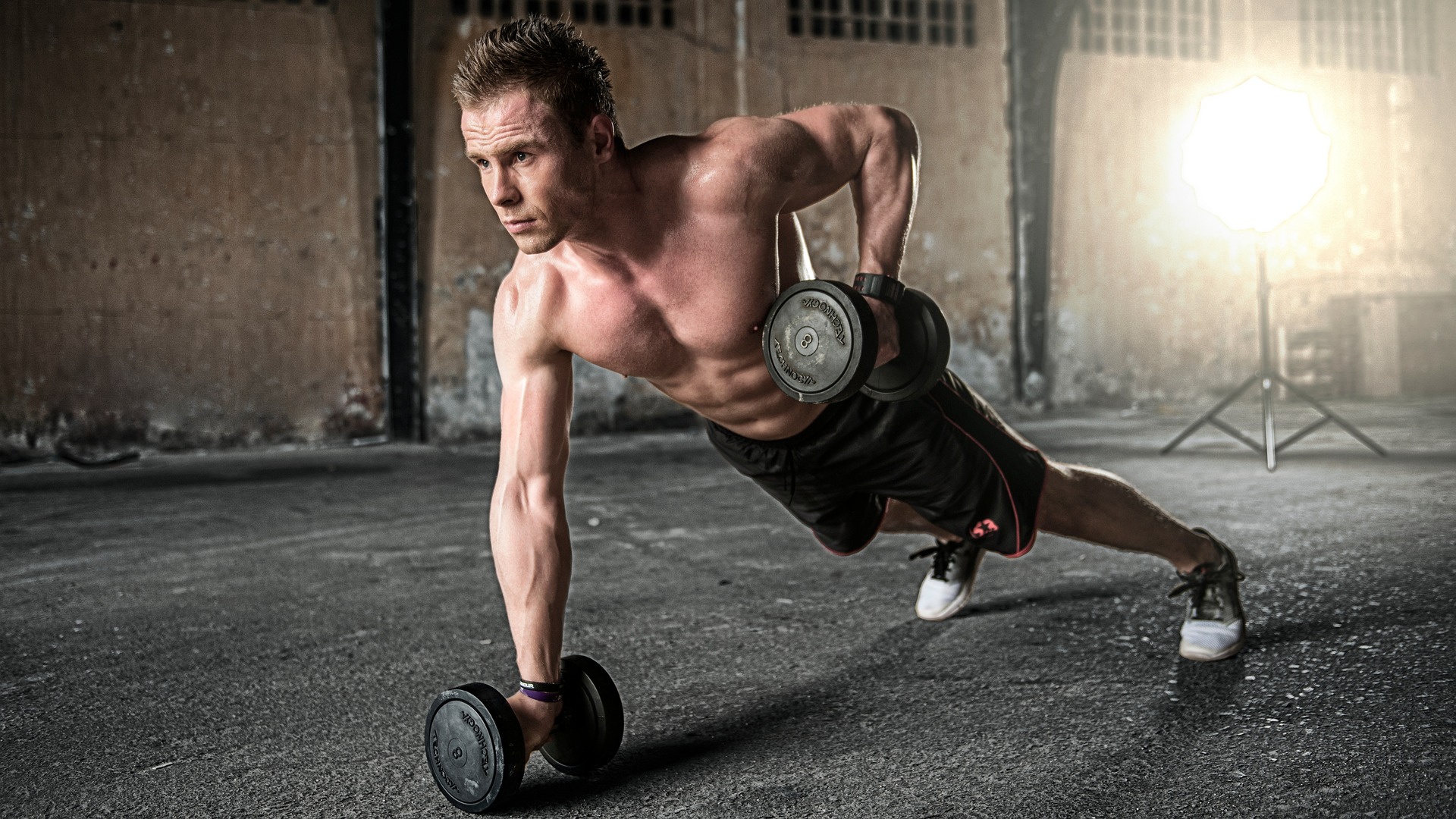Introduction
In our health-conscious world, when weight loss and weight management are top priorities, one word rules the discussion: calories. Everywhere we turn, we see debates about calorie restriction, calorie tracking, and weight loss. However, another important consideration that is sometimes overlooked is the value of burning calories. Although restricting calories is crucial for weight loss, it’s also crucial to increase calories expended. This is the ideal time to learn about the fascinating world of calorie burning and how it might help with weight loss. We will look at a variety of techniques and approaches in this post to assist you learn How To Burn 1000 Calories a Day at Home?

When trying to figure out how many calories one needs to burn each day in order to maintain their weight loss goals, there is no one size fits all solution. Through vital metabolic functions like breathing, blood circulation, and maintaining a steady heartbeat, our bodies automatically burn calories. However, in order to lose weight effectively, we must concentrate on burning more calories.
We can jump-start the calorie-burning process and hasten our development by engaging in activities that raise our heart rate and boost our total energy expenditure. In fact, by aiming for a daily caloric deficit of 1000 calories, we can significantly advance toward obtaining the weight and level of fitness we desire. Let’s investigate some efficient ways to burn those calories and change our bodies.
Having a Basic Understanding of Calorie Burning
The concept of calories in and calories out must be understood in order to effectively regulate weight. According to research, the ‘Calories In vs. Calories Out’ paradigm, which creates a calorie deficit, is essential for improving weight reduction. It happens when someone consumes less calories than their body expends through exercise and regular biological processes. This deficiency results in a negative energy balance, which forces the body to use fat reserves as an energy source, which causes weight loss.
A calorie deficit is achieved by dietary adjustments and increased physical activity. A low-calorie diet can help people lose weight and become healthier overall. To avoid vitamin deficiencies and other health problems, it’s important to find a balance and limit calorie consumption too much. According to research, a moderate calorie deficit of 500–750 calories per day is necessary to lose weight at the suggested pace of 1-1.5 pounds per week.
The Process of Burning Calories

Utilizing the energy that comes from our meals is referred to as burning calories. The process of burning calories requires turning macronutrients into body fuel. Thermogenesis, metabolism, and physical activity are all ways that the body naturally expels calories; the latter is something we can influence to help us manage our weight. Calorie expenditure is made possible by exercises including walking, housework, lifting weights, and high-intensity interval training. The number of calories one burns while exercising depends on the length, intensity, and personal factors.
BMR, or basal metabolic rate
The body uses energy even while it is at rest. The basal metabolic rate (BMR), sometimes referred to as total daily energy expenditure (TDEE), fluctuates depending on a person’s age, gender, weight, and muscle mass. BMR is a measure of the minimum number of calories needed to maintain life and takes into account the energy needed for vital body processes.
Summary
Calories are units of energy that the body needs in order to function properly. By utilizing energy through varied activities and exercise, calories are burned in order to reduce body weight. Additionally, the basal metabolic rate (BMR), which changes depending on an individual’s circumstances, illustrates how the body continues to use energy even while at rest. A good diet and physical activity are necessary for weight loss. Burning calories is therefore essential to achieving a healthy weight and general well-being.
What Affects Your Capacity to Burn Calories?
The number of calories a person can burn each day depends on a number of important factors. Understanding these factors can help you better manage your weight and increase the efficiency of your metabolism.
Weight
Calorie expenditure is significantly influenced by body weight. More calories are burned per minute of activity in people with higher body weights than in people with lower weights. This is because lifting a bigger body during exercise demands more energy. It is important to remember that weight control is a complicated process involving a number of variables and that merely concentrating on calorie burning might not be enough to get the desired results.
According to Gender Men typically expend more calories than women, according to gender studies. The main reason for this is because men typically have more muscle mass. The metabolic activity of muscle tissue exceeds that of fat tissue. It must therefore expend more calories to keep itself alive. Men typically have a higher resting metabolic rate as a result, which increases their calorie expenditure.
Genetic differences
Individual variances in calorie-burning capacity can be influenced by genetic variables. Even when performing the same workout or just sitting still, some people have a higher natural calorie-burning rate than others. Metabolic rate, muscle mass, and other aspects of calorie burning are influenced by genetic differences. For instance, some gene variants can enhance basal metabolic rate, resulting in more calories burned while at rest.
Age
With ageing, calorie-burning typically declines. According to research, as people age, their metabolism slows down. Sarcopenia, an age-related loss of muscular mass, also lowers the body’s capacity to burn calories. Additionally, as people age, they may become physically less active, which further reduces their ability to burn calories. These elements can raise the chance of developing chronic diseases like type 2 diabetes and cardiovascular problems as well as contribute to weight gain.
Exercise Level
The ability to move well is essential for burning calories. Higher levels of fitness are often accompanied by greater muscle mass, which raises resting metabolic rate and increases calorie expenditure during physical exercise. Greater endurance is another benefit of increased fitness levels, which enables people to exercise for longer periods of time and burn more calories overall.
Summary
For people attempting to effectively manage their weight, understanding the variables affecting calorie burning can be quite insightful. An individual’s ability to burn calories is influenced by a number of factors, including weight, gender, genetic differences, age, and level of fitness. Individuals can maximize their calorie burn and work towards attaining their weight control goals by adopting a complete strategy that combines consistent physical exercise and lifestyle changes.
Is it safe and healthy to burn 1000 calories every day?

It is possible to burn 1000 calories a day through physical activity, but this relies on a number of variables, including fitness level, age, body composition, and general health. A daily calorie deficit of 1000 calories might be a doable and successful objective for people who are overweight or obese. However, it’s essential to achieve this deficit through physical activity and a nutrient-rich, well-balanced diet to make sure the body gets the nutrients it needs for optimum health.
It’s important to burn calories gradually and sustainably rather than trying to do so all at once. Burning calories quickly and excessively can put you at risk for injury, weariness, and burnout. Therefore, before beginning a tough exercise programme, consulting with a healthcare expert or a trained fitness trainer is imperative.
Also Read our most popular post: The Ultimate Guide to Muscle Gain and Bone Strength: 20 Expert Tips
Summary
For some people, burning 1000 calories each day with exercise and a well-thought-out nutrition plan can be safe and healthful. But it’s important to do it gradually and sustainably. To safeguard your safety and wellbeing, it is strongly advised that you speak with a healthcare provider before making significant changes to your exercise and food routine.
How To Burn 1000 Calories a Day at Home? 5 Top Exercise
Running
If You still thinking about How To Burn 1000 Calories a Day at Home. Running is a great exercise that can help you burn a lot of calories. Depending on body weight, running speed, and distance, a run will burn a certain number of calories. Running at a moderate pace of 13 km/h for about 1.5 hours will help you burn about 1000 calories, while the precise amount depends on personal features. Including frequent jogging sessions in your regimen will help you maintain your weight in a healthy way.
Jumping Rope A fun and efficient way to burn calories is by jumping rope. It works a variety of muscle groups and increases cardiovascular stamina. Start with shorter workouts and then lengthen them as your stamina increases.
Swimming
Swimming is a very good exercise that encourages calorie burning and general fitness. It is a full-body, low-impact exercise that works a variety of muscle groups, making it perfect for people trying to meet their daily calorie-burning goals.
Swimming offers cardiovascular training that works the heart and lungs as well as other muscles. Those with joint pain or injuries will benefit from it the most. Maintain a constant pace while swimming and think about incorporating interval training to maximize calorie burn. Swimming at a moderate to high intensity for roughly 90 minutes each day can help you burn up to 1000 calories.
Include HIIT workouts.
The usefulness of high-intensity interval training (HIIT) in burning calories is well documented. Short bursts of intense activity are interspersed with rest periods or low-intensity workouts in HIIT. You may get rapid and effective exercise while burning calories and enhancing your cardiovascular health by including HIIT in your fitness regimen.
Cycling
If you appreciate outdoor experiences, cycling can be a fun and effective calorie-burning sport. It works for several muscle groups at once, making it a powerful exercise for calorie burning. Enhancing calorie burn when riding involves increasing speed. Cycling for 90 to 120 minutes at a speed of 15 mph while taking brief stops can be a viable strategy to burn about 1000 calories. Additionally, adding more resistance throughout the exercise can make the leg workout difficult and help with thigh and leg fat reduction.
Opt for exercises that engage multiple muscle groups, such as burpees, jump squats, mountain climbers, and push-ups. Exerting maximum effort during the active intervals and allowing for rest periods before the next round of exercise is critical. Aim for a 60-minute HIIT workout that includes a variety of exercises to reach the goal of burning 1000 calories.
Summary
It’s essential to find an exercise routine you enjoy and can stick with for a long time if you want to safely burn 1000 calories every day. Calorie-burning techniques include running, cycling, and swimming, and include HIIT exercises in your programme. To attain your fitness objectives and maintain good weight management, it is important to emphasize consistency in your workout routine.
Before concentrating on burning 1000 calories per day at Home, keep these guidelines in mind
The challenging objective of burning 1000 calories per day through exercise calls for careful consideration and adherence to particular rules. It’s important to realize that this degree of calorie burning is a strenuous exercise and might not be appropriate for everyone. To ensure a secure and long-lasting strategy, it’s crucial to keep the following recommendations in mind before starting such a routine.
Put protein in every meal.
Protein is essential for muscle growth, repair, and satiety. Getting enough protein at each meal promotes post-workout recovery, preserves muscle mass during weight loss, and prolongs feelings of satiety. Lean meats, chicken, fish, eggs, dairy products, legumes, and plant-based choices like tofu and tempeh are all excellent sources of protein.
Keep hydrated.
For the best exercise performance and recovery, hydration is essential. Throughout the day, drinking enough water supports healthy muscular function, regulates body temperature, and promotes digestion. Additionally, it’s essential during challenging workouts that significantly increase calorie burning. To replace lost fluids and maintain ideal hydration levels, make sure to drink enough water before, during, and after your workouts.
Consume Enough Food to Refuel

It’s crucial to nourish your body properly before engaging in workouts that burn a lot of calories. You need to eat enough calories to sustain your energy levels, preserve your muscle mass, and promote recuperation. Overly limiting calories can result in exhaustion, vitamin shortages, and possibly even muscle loss. Striking a balance between ingesting enough calories to satisfy your body’s demands and reducing your calorie intake to lose weight is crucial.
Choose complex carbohydrates instead
Whole grains, veggies, and legumes are examples of complex carbs that offer long-lasting energy and enhanced satiety. Additionally, because they digest gradually, they aid in stabilizing blood sugar levels and reducing cravings. By giving your body the nourishment it needs without producing jarring ups and downs in energy, complex carbohydrates can help your workouts burn calories.
Tips and guidelines by Fitnessflexflow
Consider including dance workouts in your routine if you’re seeking for a fun and different strategy to improve your calorie-burning and achieve your daily calorie-burning goal of 1000. Dancing is a fun and efficient technique to burn calories because it works for several different muscle groups while simultaneously raising your heart rate. Whatever dancing style gets you moving—salsa, hip-hop, Zumba, or another—these rhythmic exercises will help you lose weight while having a good time. You’ll not only increase your cardiovascular fitness but also your strength and coordination. So play your favorite music, have fun, and watch the calories disappear.
The Last Word
We frequently place a high priority on calorie counting and portion management when trying to lose weight and improve our general health. But burning calories is as important for accomplishing our objectives. We may speed up our progress and make big advancements towards a healthy physique by comprehending the notion of calorie burning and putting effective tactics, like HIIT workouts, into our routine. Remember that there is no one solution that works for everyone and that our ability to burn calories is influenced by a variety of factors, including our weight, gender, age, fitness level, and heredity. We must prioritize our health, work towards burning 1000 calories a day gradually and sustainably, and seek professional advice when necessary. So let’s embrace the effectiveness of burning calories, enjoy physical activity, and reach our maximum potential on the road to weight loss.
For more watch the video: https://youtu.be/3pdJoMZA5tY
Frequently Asked Questions
1. Can I burn 1000 calories a day without exercise?
While exercise significantly contributes to calorie burning, you can also create a calorie deficit by focusing on diet and making lifestyle changes. However, combining exercise with a balanced diet is the most effective way to burn calories and achieve long-term results.
2. How long should each workout session be?
The duration of your workout session depends on your fitness level and the intensity of the exercises. Aim for at least 30 minutes of moderate to high-intensity exercise per day, gradually increasing the duration as your fitness improves.
3. Is it necessary to count calories while trying to burn 1000 calories a day?
While calorie counting can be helpful for some individuals, it is not necessary for everyone. Instead of obsessing over numbers, focus on maintaining a balanced diet, portion control, and engaging in regular physical activity.
4. Can I alternate between different exercises to burn calories?
Yes, alternating between different exercises not only helps prevent boredom but also challenges your muscles in different ways, leading to more efficient calorie burning. Incorporate a variety of cardio and strength training exercises into your routine.
5. Are there any safety precautions I should take when attempting to burn 1000 calories a day?
It’s important to listen to your body and not push yourself beyond your limits. Stay hydrated, warm up before exercising, and use proper form to avoid injuries. If you have any underlying health conditions, consult with a healthcare professional before starting a rigorous exercise routine.
6. Can I burn 1000 calories a day without using any exercise equipment at home? Absolutely! Without any equipment, you may exercise at home and burn up to 1000 calories per day. There are a number of exercises that only use your body weight and little to no equipment. Jumping jacks, burpees, squats, lunges, push-ups, and yoga positions are a few examples. If you have access to a stationary bike, you can also do exercises like brisk walking, running, dancing, or cycling.
7. Are there any specific diet recommendations to support burning 1000 calories a day at home?
Although there aren’t any particular diets designed specifically for burning 1000 calories a day at home, it’s still necessary to eat a diet that is nutritious and balanced. Put an emphasis on eating entire grains, fruits, vegetables, lean proteins, and healthy fats. It’s also critical to maintain hydration and steer clear of sugary beverages. A qualified dietitian or nutritionist can offer you individualized advice based on your unique requirements and objectives by consulting with them.
8. Are there any internet tools or applications I can use to monitor my at-home calorie burn?
Yes, there are several internet tools and applications available to monitor your at-home calorie burn. Fitness tracking apps, such as https://www.myfitnesspal.com/, https://www.fitbit.com/, or https://www.google.com/intl/en_us/fit/, can help you track your workouts, and calories burned, and even provide insights into your overall fitness progress. These tools often offer a range of features and can be a valuable resource in keeping you motivated and accountable.
9. How much time must I spend working out each day to burn 1000 calories?
Your weight, degree of fitness and the intensity of your activities are just a few of the variables that affect how long it takes to burn 1000 calories through exercise. To attain that calorie burn target, however, it may often require 60 to 90 minutes of moderate to intense exercise. To prevent overtraining or injury, pay attention to your body and gradually lengthen your workouts. Consistency should always come before pushing yourself too far.
10. Is it necessary to follow a high-intensity workout routine to burn 1000 calories a day?
No, you do not need to burn 1000 calories a day alone through high-intensity exercise. You can burn calories more quickly by engaging in high-intensity exercises, but there are other efficient strategies to reach your objective. You may burn calories by combining several exercise styles, such as cardio, weight training, and interval training, while also keeping your workouts interesting and fun. Finding a regimen that works for your fitness level, tastes, and general health is crucial.
Note: Always get advice from a medical practitioner, fitness specialist, or qualified nutritionist before making significant adjustments to your activity or dietary routine. Based on your particular circumstances, they can offer you personalized guidance and help.
Disclaimer: This article’s only goals are knowledge dissemination and awareness raising. It is not meant to take the place of expert medical advice.

3 thoughts on “How To Burn 1000 Calories a Day at Home?”